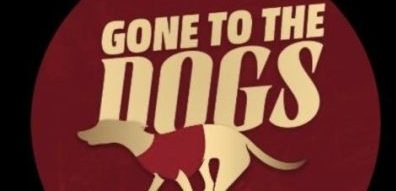The Greyhound Star photo collection runs into ‘some’ tens of thousands of photos, many of which lay in boxes waiting to be classified and stored.
They cover virtually the entire history of the sport in Britain and come in a huge variety of subjects, from race presentation photos to shots of owners, trainers and kennelstaff, track and coursing images, and a wide range of others that could only come under the label of ‘miscellaneous’.
As a change from the regular format of Remember When – here are six quite different images, each with their own story to tell.

This particular photo came with minimal captioning other than to confirm the name of the winner, ‘Captain Lake’ on the rear of the photo.
We are publishing it mainly because it captures the fashion and feel of August 1948 with an interesting back story.
The jacket confirms the occasion which was only the second running of the Greyhound Olympic. It was staged over 600 yards at Dagenham and worth £500 to the winner (which equates to around £23,500 today).
The winner was trained by Wembley’s Jack Harvey and was owned by Mr F Legg, presumably the gent holding the trophy. More familiar to some of the readers is the tall gent at the centre of the pic – track boss Ken Guy. Many years later, Ken became the popular and effective NGRC Stipendiary Steward for East Anglia.
Captain Lake was a 12/1 shot when winning the final and would later be beaten a neck in the same year’s St.Leger Final. He also contested the Cesarewitch decider.
The story behind this particular photo though is that the Captain was a party pooper. The 2/5f and runner-up Mazurka was owned by Paddy McAlinden whose brother Kevin McAlinden was the goalkeeper for the 1948 Great Britain Olympic Football Team. The entire team had turned out on the night expecting a big win.

Here we have a photo of Shady Parachute with trainer Phil Rees.
Parachute was one of four offspring by Crazy Parachute who reached the 1967 Derby Final which saw a forecast for two of them, the Sheffield based pair Tric Trac and Spectre II. The Rees runner (9/2) finished fourth.
A year later, she was back and this time as the 4/6f. Though her part in it will always be overshadowed by the Derby’s greatest ever controversy – nationally, more noteworthy even than Droopys Hewitt’s positive test disqualification in 2003.
We are of course referring to the Camira Flash scandal when the dog presented to HRH Prince Philip as a charity runner, finished fourth in the semis but was promoted to the final when the stewards deemed that Irish entry Not Flashing had fought.
It was not a universally accepted verdict. Needless to say, the 100/8 no-hoper won the final and White City practically became a riot scene.
The rules allowing stewards to allow non-qualifier back into a competition were changed immediately – at least in Britain.
Although beaten, Parachute remained a top class performer for the kennel winning an English Oaks and The International and finished runner-up in the Laurels. She also held the Wimbledon 500 yard track record. She won 24 of 44 opens and a little over £5,300 in career prize money – the equivalent of around £115,000 today.
Phil was of course the grandfather of Hove trainer Richard Rees.

Our first 1980s selection comes from Hackney and the Mecca Bookmakers Stayers Stakes won by Apapa Song.
The winner was bred and trained by Linda Mullins from a litter by the family’s Derby winner Lacca Champion out of the former open race bitch Lassinagh Style.
Linda was on hand to collect the trophy though there are a handful of other familiar faces on show: a youthful Hackney RM Michael Marks (extreme left), the track’s GM Peter Spratley (extreme right) and the cherublike young kennel lad, John Mullins.

The 1990s contribution is the proud Bristol trainer Terry Kibble, pictured with the 1992 Blue Riband winner Dempsey Duke.
Not blessed with the greatest of early pace, the son of Shanagarry Duke was an absolute machine ‘with a run’.
He ran third to Ballinderry Ash in the 1991 English Derby Final before reaching that year’s Champion Stakes Final at Romford. He was also beaten a head in the Select Stakes and by a neck in the All England Cup.
He saved his best break for the 1991 East Anglian Derby Final which he won by almost five lengths in an incredible 27.68. The previous record was 27.91.
He was just two spots outside Phantom Flash’s Wembley 490m clock when taking the Blue Riband as the 2/1f, landed the £15,000 Reading Masters in 28.09 and was the beaten favourite in the same year’s Olympic.
The black wasn’t heavily used at stud – given his sire Shanagarry Duke was reputed to throw mainly ‘Shelbourne 600 types’ – and he stood in Britain.
Yet Dempsey Duke would embed himself into European bloodlines for generations to come by siring, one of the most early paced runners seen in many years, the great British bred, Savva trained star, Staplers Jo. – photo Steve Nash














